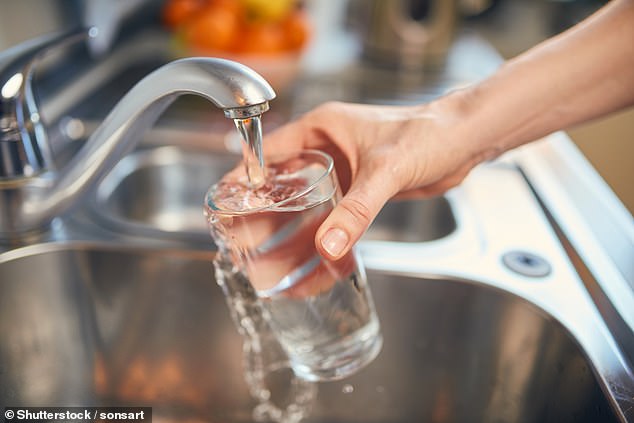Medlow Dam: Blue Mountains waterway shut down after cancer-linked ‘forever chemicals’ found in Sydney’s water supply
A dam has been closed after it was found to be the source of so-called ‘eternal chemicals’ which have contaminated the water supply of 41,000 Sydney residents.
WaterNSW announced on Wednesday that the per- and polyfluoroalkyl substances (PFAS) in the Blue Mountains water came from the Medlow Dam at Medlow Bath, west of Sydney.
In 2023, the World Health Organization declared perfluorooctanoic acid (PFOA), one of approximately 14,000 known variants of PFAS, a class 1 human carcinogen.
PFOA was one of the chemicals consistently found in the Medlow Dam.
“This dam does not itself supply raw water but has been disconnected from the water supply as a precaution while further investigations are carried out,” a statement from WaterNSW said.
The water from the Medlow Dam is used along with water from other sources for the Cascade water treatment plant.
A spokesperson for WaterNSW told the Sydney Morning Herald that the water supplied by the Cascade plant to local communities is safe to drink and meets Australian drinking water guidelines.
But the amount of PFAS that can be present in drinking water is subject to new limits in the US, where legislation is much stricter than in Australia.
On Wednesday, WaterNSW revealed that the presence of per- and polyfluoroalkyl substances (PFAS) in the Blue Mountains water supply came from the Medlow Dam (pictured) in Medlow Bath, 108km from Sydney
Earlier this month, a senior policy advisor for the International Pollutants Elimination Network claimed Australia is lagging behind other countries when it comes to drinking water safety.
“Australia cannot continue to have drinking water guidelines that are an international embarrassment,” Dr Mariann Lloyd-Smith told ABC’s Radio National.
‘Australian standards … are outdated, outdated and absolutely useless in protecting human health. We really need to get rid of these chemicals quickly.
“And especially when it’s in drinking water, something that everyone has to consume. It’s just totally unacceptable.”
WaterNSW has been working for months to find the source of the elevated PFAS levels at the Cascade filtration plant, which supplies drinking water to the millions of people who visit the World Heritage area each year, as well as to local residents of the Blue Mountains.
The levels found at the plant were about 300 times higher than those at Warragamba Dam, Sydney’s main source of drinking water.
Sampling results released Wednesday indicate the source of the contaminants is likely high concentrations of PFAS in the Medlow Dam, which exceed national safety standards.
WaterNSW said all dams are being monitored and preliminary sampling showed Medlow Dam is the only one in the network with elevated readings.
“WaterNSW will keep the community updated on the progress of the investigation and work closely with NSW Health and Sydney Water to ensure drinking water remains safe,” the statement said.
In Australia, PFAS chemicals are widely used in fire-fighting foam on military bases because of their heat and flame resistance.
The chemicals were developed in the 1940s and 1950s and are known for their water and stain resistance. They are used in products such as raincoats and non-stick frying pans.
According to Dr Nick Chartres from the University of Sydney’s Faculty of Medicine and Health Services, these are ‘the most mobile, persistent and toxic chemicals on the planet’.

However, Dr Lloyd-Smith warned against buying bottled water to use instead of tap water.
“We know they can get into the Arctic ice caps, into the ice in Antarctica, into the sediment of the deep sea floor. They travel pretty much everywhere,” he said.
PFAS in drinking water led to new, stricter regulations in the US.
Most Australians likely already have very low levels of PFAS in their bodies through sunscreen and cosmetic use.
Long-term exposure, such as drinking contaminated water over a prolonged period, can lead to immune and heart problems. It can also affect the growth of the fetus and child.
Dr. Chartres said the U.S. Environmental Protection Agency “has determined, based on the best available evidence that we have … that there really is no safe level (of exposure to PFAS).”
“So if you’re exposed in any way over your lifetime, your risk of these diseases increases gradually, depending on the level of exposure.”
He said the US law change should be a warning to Australia.
‘We now need to look at that and say, how do our standards compare? … And if there is any form of deviation from Australian (laws), why is there a deviation?’
In the US, the maximum allowable amount of PFOA and another variant, perfluorooctane sulfonate (PFOS), in drinking water is four parts per trillion.
But in Australia, PFOS and perfluorohexanesulfonic acid (PFHxS) – another PFAS variant – are allowed up to a level of 70 parts per trillion.
PFOS and PFHxS were also both found in the Medlow Dam.
Doctor Lloyd-Smith However, he did warn against buying bottled water to use instead of tap water.
“We’ve also found PFAS in bottled water, so that’s not the solution,” she said.
Filter systems can reduce PFAS levels in drinking water, but they are expensive and unaffordable for many people.
Dr Lloyd-Smith said people should try to limit their exposure to PFAS beyond just its presence in drinking water.
She advised people to read the labels and ingredients of the makeup products they use.
People should also research how their clothes, food and food packaging are made and what chemicals they may contain.
“Australia should assess (PFAS) as a class and aim to restrict and eliminate all uses of PFAS,” Dr Lloyd-Smith said.
